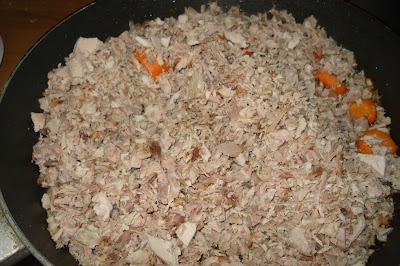This is Dee's kitchen in Idaho, USA.
Dee writes:
"I've been reading your blog for about the last 3 years. I really enjoy your tutorials! In fact, tomorrow I am going to try my first batch of cold pressed soap! I've always enjoyed reading your blog and never once have I joined the discussion - but this new Kitchen Sink idea was fun. Also, my kitchen is my favorite room of our home so don't mind sharing!
My husband and I moved here about 4 years ago. We built this house together, and put a lot of ourselves into it. We did most of the work ourselves or traded out what we couldn't do ourselves. I chose every fixture, paint color, etc. And this is the first house where we have both felt at "home". We live in a small town, Payette, Idaho USA. We have a little over an acre of land, a barn that is over 100 years old where our chickens live, and I have a huge garden every year. We love it here. When we moved here, we were getting out of a large city where it was crowded and expensive. We wanted to simplify, and we wanted to raise animals and have a nice garden. We have had sheep and a cow, and chickens and next year we plan to have turkeys. When we moved here, I was able to quit working outside the home and focus on my household. And we planned to have children too, so I wanted to be home with them because I don't think there is any job more rewarding.
Sadly, we were unable to have children and after spending over $30,000.00 on fertility treatments I became pregnant only to miscarry. It was devastating, and words do not describe what we've been through. We have managed to keep ourselves out of credit card debt by refinancing our home, until this year. My husband found out he had a health problem and we had to get him treatment that was not covered by his insurance. His medicine cost us $1,000.00 per month! We are not wealthy people, and this was not something we had anticipated. So we put these medicines on our credit card. Then my husband lost his job in the beginning of October! So, we are both looking for work again. The government is going to cut the unemployment starting January 1st. And what we get right now is only enough to pay our mortgage payment. When his unemployment is cut, we will have no way of paying the mortgage payment. It's a sad situation, and I know a lot of people in half a dozen states that are in the same boat as us. Many of our friends have already lost homes to foreclosure. I thought I would send you these pictures of my kitchen, because I think it may only be "my" kitchen for a short while longer. We don't qualify for any government aid, and we've applied for every job there is with no luck so far! We are hoping to both find work and try to get our debt under control and get back to our simple life. Even if that means that we wont be living in our home. And we have learned a lot from this situation, I've found even more ways to save money. Someday, when our situation improves we want to try to adopt a baby. Please enjoy my pictures. These were taken right after I cleaned up from breakfast this morning."
Please don't forget to comment. A comment is like payment for the time taken to post, and in this case in sending in the photos. Many of us were enthusiastic about this series, so make sure all the photos get a good number of comments. I don't want any of the ladies sending in photos to regret joining in. Thank you friends.











































